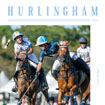USPA Certified Polo Instructor Program
Madison Darbyshire
Is a professional journalist currently based in NYC. She is a graduate of Columbia University and has worked for The Economist Group in San Francisco. She is an avid horse lover and admirer of the sport of polo.
Hurlingham Magazine
A red card hit the table and the argument halted. The topic of contention was the agreed upon term for a polo player’s ready position in the saddle. A room full of polo players, all renowned coaches, and trainers with over 250 years of combined teaching experience volleyed the question back and forth across the room in Sheridan Wyoming hoping to come to an amicable decision. Is it a “polo stance?” A “polo seat?” Or a “polo position?” For three days the assembled team hashed out the specific terms that would be formalized in the first official USPA Polo Manual, an integral part of Kris Bowman’s multi-year initiative to launch the Certified Polo Instructor Program.
Each participant was given three red ‘veto’ cards at the start—an effort to keep things democratic, according to Bowman— as the group established a common vocabulary for the 2000-year-old sport. If a participant felt strongly about a particular wording, they could play their trump card. “Polo seat” emerged as the winner. The group moved on to the next term.
The meeting was one of many during a nearly 20-year journey to standardize polo instructor certification in the United States. The effort was a long time coming, according to Jess Downey, Polo Performance and Education Manager at the USPA.
“Everyone knew there was a need for an instructor certification and manual,” she said. But the cost of the creating such a program, and the question of liability deterred those who might have been interested in the past.
“When we started,” said Bowman, Executive Director of Development at the United States Polo Association, “We used to say it was like standing at the bottom of the mountain and looking up at the top.”
Knowing the length of the road ahead, she took one step at a time.
“It was a tremendous personal effort by Kris to make this happen,” said Charles Smith, the USPA Polo Development Chairman.
To create a program that was meaningful to the established polo community, Bowman engaged instructors from the start. She spent over a year soliciting professional input. An experienced polo instructor and clinician, Bowman met and observed other top instructors around the country, and hosted trial lessons to test various methods.
“There was no industry standard before this effort,” said Adam Snow, a former 10-goal player inducted into the Hall of Fame in 2013. “[Instructors] just learned what they learned and put out their placard. It was very informal.”
As a result, instruction quality varied from club to club, and from coach to coach.
Bowman was part of the Polo Training Foundation’s initiative to standardize polo instructor certification in the 1990’s led by Danny Scheraga and Polo Canada. The hurdles proved too great and lack of funding curbed the efforts. Then after joining the US Polo Association in 2009 she approached the USPA Board of Governor’s and was given the funding necessary to make the program a great success. In the beginning she met with experienced Clinicians and coaches around the country to design a comprehensive program. She also looked for inspiration abroad, turning to the Hurlingham Polo Association, which had already offered professional instructor certification programs for years. The USPA project slowly gathered momentum, and after a revue with a sports marketing analyst in 2014, Bowman concluded that a certification program was essential to the continued, successful growth of US polo. She received immediate support from USPA Chairman, Joe Meyer.
“Joe is first generation polo, and he knows how hard it can be to get safely into polo as a novice,” said Bowman.
The purpose of the certification program is to ensure that every person experiencing the game for the first time is taught by an instructor who is trained to ensure that new students have an enjoyable, appropriate initial experience with polo.
But the certification program needed a textbook. The need for a standardized manual, an aggregate of years of shared polo knowledge traditionally passed down orally, felt especially vital in the US, where polo is a relatively young sport.
“In Argentina, everyone sits around and drinks mate and talks about the subtleties of the game,” said Snow. “This way the next generation of players and kids are hearing about polo from people who have played at the top of the game. But in this country it is more challenging to learn those finer points because there aren’t a lot of players who have reached the top levels of the sport, and the country is so large it is difficult to have that interaction.”
The manual is the first comprehensive resource written for polo. It is the tendency of other manuals to be hyper-specific to one aspect of the sport.
“The focus isn’t on just strategy or just nutrition or, just, just, just,” said Downey.
The new Polo Manual encompasses everything that active polo professionals do. The reference guide addresses horse weight, nutrition, feeding regimens, trailer skills, tack, horse fitness, proper seat, swing mechanics and everything in between.
The manual and instructor certification program also encourage the development of polo skills off the field. “Eighty percent of polo is horsemanship,” said Bowman.
Training and horse care happens before players arrive on the field. The hope is that the combined resources of the manual, which is publicly available online at poloskilz.com, as well as the site’s instructional videos, will create a broad foundation of knowledge from which coaches and players can build.
The goal of the Certified Polo Instructor program isn’t to change anyone’s teaching style. “Everyone has their own panache,” said Bowman. Instead, the aim is to create a baseline guide to synchronize the way polo is taught to beginners. The emphasis in the Level-1 program is safety.
“Polo instructors are the face of polo,” said USPA chairman, Joe Meyer.
Instructors are the first people new students meet when they arrive for a lesson, and have an outsized impact on their first experience with the sport. A new rider needs to be put on a horse appropriate to their experience and ability, and feel confident as they learn the game. A bad instructor can reflect poorly on the polo industry as a whole and endanger their student. Meyer believes having a positive first experience is crucial for creating a lasting interest in learning polo and growing the sport across the US.
Smith said of the program’s impact, “The more of these trained certified instructors that we get scattered around the country the more will be able to grow polo in the US and grow players in the right way.”
So far 65 instructors have become certified through the program, which takes an average of six months to a year to complete. “I’m proud of the people who attended,” said Meyer. He wrote letters of congratulations to each of the first wave of CPI graduates.
Another hope is that the program will be a resource for polo instructors who previously had to fend for themselves. Instructors would come to events, said Bowman, “thirsting for guidance, and we had nothing to give them.”
The CPI program aims to be a guide for continued instructor development and education. The program will expand its offerings over the coming years, and is already working on a Level-2 program, focusing on corrections. The CPI program is looking to reach as many instructors as possible, and by 2020 certification will be compulsory for all interscholastic and collegiate polo instructors.
“I think it is commendable to be standardizing an industry that is growing,” said Snow of Bowman’s effort. “It’s like planting a tree. We’re planting the seedlings and doing it right, and the country and the world will feel the benefits of this kind of grassroots change a few years down the line, with better quality players, instruction, and polo in our country.”
Now that she is standing at the top of the mountain she could once only see from a distance, Bowman is looking forward to what’s next. There is talk about a polo manager certification, as well as an instructor summit to bring together the best coaches in the industry to share drills, skills, and techniques. A Level-3 certification is outlined, and the red cards are ready for the next group meeting.
For now, though, Bowman is putting her new instructor’s manual to use. There is one copy, still glossy, on the coffee table in her home in Aiken, SC., and another hard at work in the barn—just like her.


